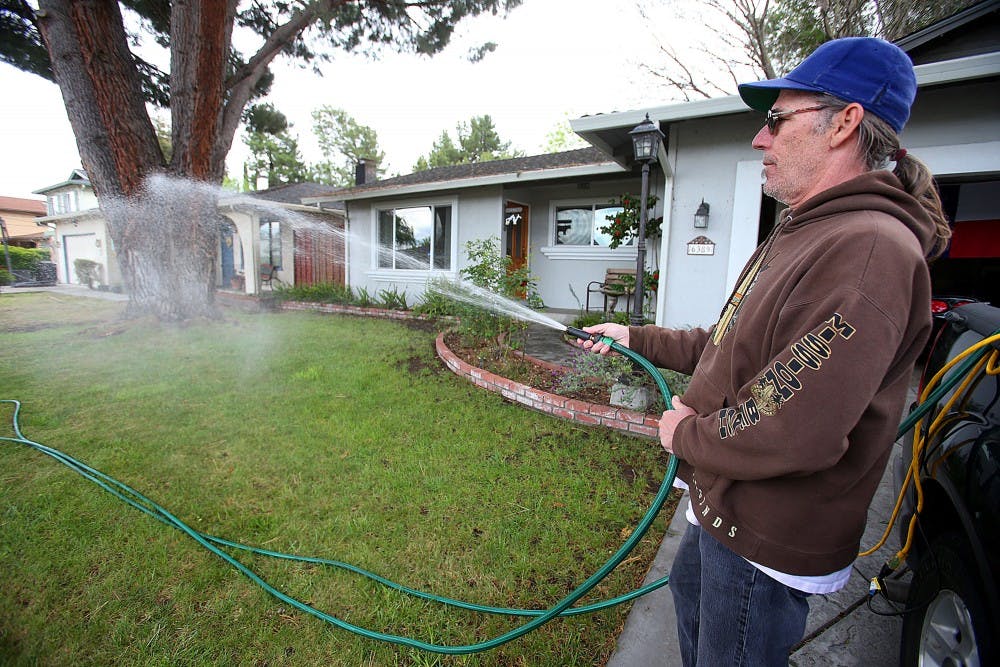With summer right around the corner, which often leads to higher water consumption, one ASU student has created an invention that could revolutionize water conservation using modern technology.
Business student Arthur Steingart was on a personal quest to make a difference when he came up with the idea for a modern water conservation timer called Waterall, a smart irrigation timer that calculates the most efficient watering schedule based on the plants in your garden, Steingart said.
“When you install the device, part of a five-step process involves putting in the plants you have, which can be general or specific — there are up to 4,000 plants in the database,” he said. “Once you've put in that information, with other variables such as soil type, the timer can compute the most efficient watering schedule.”
Steingart said the device is used to allocate the water given to the plants, which can be flexibly set based off the owner’s situation. Up to 16 zones can be set, containing as many plants as the owner has. The zones can be monitored through a portal on the website, which would also provide the user with a daily weather update and daily water use. Any changes in the weather update will affect the device, which will adapt to conserve water.
"This comes back to finding solutions to problems," he said. "This product answers a personal quest for myself — to balance making a difference with change in the marketplace. It's the beginning of a new era in influence and creates a benchmark to make a difference in the community."
After four years of California’s historic drought, California Gov. Jerry Brown announced mandatory water restrictions statewide, which ordered urban water use to be decreased by 25 percent.
While a major reason to use the device is to limit personal use of water, another is to receive various government rebates from using water irrigation controllers. City websites state that rebates in Avondale are approximately $50, while Chandler, Peoria and Scottsdale offer around $250.
Steingart said the device can save owners 30 to 50 percent of water, which is more than the average water irrigation timer at 20 percent.
“The (Environmental Protection Agency) has incentivized or validated water technology as a benchmark in the program,” he said. “States have incentivized people to buy (water irrigation timers) to make water use free or cheap. We need to know how we are going to align ourselves with the technology today to help ourselves tomorrow.”
Sarah Porter, director of the Kyl Center for Water Policy, said although most of the water use in Arizona goes toward agriculture, it is still important to look at different variables to save water in the home.
"Most residential water use goes to outside landscaping and pools," she said. "The easiest place to look to save water is outside."
Porter said another way to control and conserve water is by the plants homeowners choose. Desert-adapted plants are the best choice for water conservation, since they can easily survive in high temperatures.
City of Phoenix Spokeswoman Stephanie Bracken said approximately 70 percent of residential water use in the Valley is outdoors.
"Residents can reduce water use by making sure they provide the amount of water their plant materials require at a frequency that is adjusted based on the time of year," she said in an email. "(Phoenix officials) advise that residents looking to change out or add landscape plants consider drought-tolerant and low-water use plants."
Bracken said another way residents can look to increase the efficiency of outdoor water use is by properly maintaining irrigation systems.
While Steingart's technology may be helpful to some families, others might find it a burden. In the city of Tempe, single-family homes start out with a base of 10,400 gallons of water annually, which then changes the following year based off of actual water consumption.
Steingart said he is aiming to have the device in stores as soon as a retail partner is established. The device should be sold on the website as early as June.
“Consumers need to educate themselves and do what they feel is right,” he said. “We have the solution and recognize the problem. The solution is Waterall — every tier leads back to this device.”
Reach the reporter at Jlsuerth@asu.edu or follow @SuerthJessica on Twitter.
Like The State Press on Facebook and follow @statepress on Twitter.




